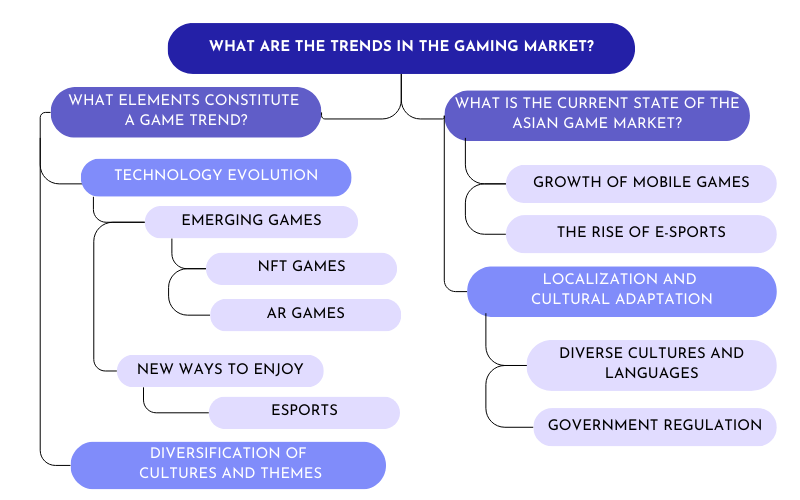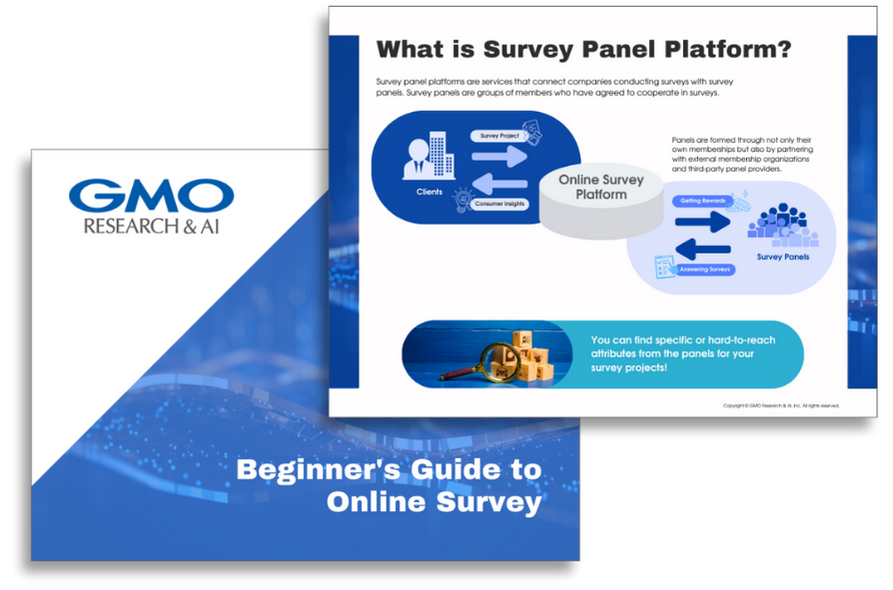Step-by-Step Guide:
Understanding User Research
with Practical Examples
2024/10/01

What is User Research?
Many companies struggle to understand their customers' needs and behaviors in today's business landscape. For instance, it becomes challenging to create effective marketing strategies without accurately identifying what customers are looking for or what products and services interest them. Marketing research plays a crucial role in solving such challenges.
- What is Marketing Research?
Marketing research is the process of investigating customer needs and behaviors to formulate business strategies based on the data collected. Specifically, it involves gathering customer feedback through surveys and interviews, analyzing the results, and deriving valuable insights.
- What is User Research?
As part of marketing research, user research focuses on analyzing the behavior and preferences of a specific target audience. This research reveals what kinds of products or services customers are interested in and how they use them.
○ Why is it Important?
User research is essential because the data it provides directly impacts strategic business decisions. Through this research, companies can clarify the following points:
・Verifying the Target Audience: It helps confirm whether the users identified as the target audience are actually interested in the company's products or services.
・Discovering Potential Customers: The research can uncover new potential customer segments, broadening the scope of marketing strategies.
・Clarifying Consumer Needs: It provides insight into specific consumer needs and expectations related to products and services.
In this article, we will discuss key points of survey design and how to apply research findings to marketing strategies, using a recent survey we conducted as a practical example.
Steps in Designing a Survey
Whether it's user research or any other type of investigation, the success of a survey heavily depends on its design.
Key Points in Survey Design:
When designing a survey, it’s crucial to clearly define the primary objectives and the kind of data you aim to extract. Without a clear understanding of these aspects, gathering the correct data to solve the identified problems becomes difficult, leading to confusion when interpreting the results. To avoid ambiguity, ensure the goals are well-defined and keep specific outputs in mind while designing the survey.
- Key Considerations Before Designing a Survey: Before proceeding with survey design, clarify the following points:
○ Why is this survey necessary?: Understanding the fundamental reason for conducting the survey helps guide the design process.
○ What problem do you want to solve through this survey?: Pinpoint the specific issue or challenge that the survey seeks to address.
○ What insights do you expect to gain from this survey?: Establish clear expectations regarding the insights the survey intends to uncover.
Example
This particular survey aimed to uncover insights related to trends in the Asian gaming market. Below is a tree diagram that we created for the survey design process. As illustrated, it's essential to approach survey design with the target audience’s perspective in mind, regardless of the current assumptions about their behavior.

Purpose of Survey Design:
A clear intention behind the design is indispensable to conduct a successful survey. The purpose of the design is to outline what the survey aims to clarify or what issues it intends to solve. This clarification serves as a guiding principle for interpreting the results. By making the purpose explicit, the survey gains direction, and the analysis of the resulting data becomes more concrete and meaningful.
Example
The user research conducted by GMO Research & AI on gaming habits in Asia aimed to gain insights into the "cultural diversity" that global companies face when entering the Asian gaming market. Even neighboring countries often differ in ethnicity, religion, and language, each forming its own unique culture. For global companies, adapting to this diversity poses a significant challenge. Additionally, with competitors already leading the market, new entrants must carefully position themselves and devise strategies accordingly. In such a context, understanding and adapting to diverse cultures becomes crucial for identifying the market's potential.
Incorporating Intent into Survey Questions:
Surveys can be more effective if the specific questions reflect the intent of the survey design. Questions developed with clear intent are more likely to produce insightful and practical data that can drive meaningful analysis.
Example
In the gaming habits survey, we designed questions to understand what drives people to play games and what criteria they prioritize when selecting a game. By doing so, the survey can provide insights into what consumers in each country seek from games, their preferences, and the cultural background that shapes their gaming habits.
For more detailed steps on how to design effective surveys, refer to the full article here.
Critical Points for Data Analysis
When analyzing survey results, it’s essential to pay attention to several key points. By focusing on these aspects, you can maximize the data collected and extract valuable, actionable insights.
- Data Integrity and Consistency:
Check for missing data or outliers and review the consistency of responses. Clean the data to ensure that your analysis is based on reliable information. - Data Segmentation Aligned with Objectives:
Classify the data according to relevant segments, such as gender or age group, to identify the unique characteristics of each consumer group. This allows you to understand motivations and preferences across different demographics better. - Identifying Trends and Patterns:
One of the most critical tasks in data analysis is to detect trends and patterns. For example, you may discover that a specific game genre is particularly popular among certain age groups or in particular regions. Recognizing such patterns helps you understand the target market’s characteristics more accurately. - Combining Quantitative and Qualitative Analysis:
Use quantitative data to grasp overall trends and percentages, while qualitative data can provide a deeper understanding of specific opinions and emotions. By combining both methods, you can uncover more comprehensive insights. - Eliminating Bias:
It's critical to remain objective and avoid personal biases when analyzing data. Focus on what the data itself reveals rather than interpreting it based on preconceived notions.
By keeping these points in mind, you can enhance the effectiveness of your data analysis. Additionally, leveraging AI tools can streamline the process and yield more profound insights.
How to Utilize Survey Results in Business
Effectively interpreting and integrating survey results into your business strategy can be the key to success. Here are some essential points to help you leverage the findings:
- Extracting Insights:
Start by thoroughly analyzing the survey data to identify customer behaviors and preferences. This involves reviewing the distribution of responses and looking for correlations between data points. You can better understand consumer needs and motivations by discovering specific trends and patterns. - Applying Insights to Specific Strategies:
Use the extracted insights to develop concrete marketing strategies. This could include refining your target audience, designing promotional campaigns based on latent consumer needs, or identifying areas where your products or services can be improved. At this stage, it's crucial to turn the insights into an actionable plan that outlines the steps you need to take. - Continuous Evaluation and Improvement:
Regularly assess the effectiveness of your implemented strategies and make adjustments as needed. This process includes monitoring the progress of initiatives, analyzing outcomes, and identifying areas for improvement. Establishing a feedback loop where you consistently collect new data through ongoing research and updating your strategies ensures long-term success.
Survey Example
At GMO Research & AI, a recent survey of game players in Singapore, Thailand, and Vietnam examined preferences for mobile games, AR games, eSports, and NFT games. Insights from this study revealed critical trends in player preferences across different regions and game types. You can view the detailed survey results here.
Following these steps, you can turn raw data into meaningful actions that align with consumer demands and drive business growth.
Turning Research into a Catalyst for Business Growth
User research is a powerful tool to gain deep insights into specific consumer groups' behaviors, preferences, and needs. Through this type of research, companies can clarify the direction of their marketing strategies and product development. The valuable insights gathered help businesses make informed decisions, driving growth and innovation.
In addition to the user research discussed here, many other research methods can address various business challenges. By clearly identifying your company's specific challenges, you can use marketing research effectively to solve them.
GMO Research & AI experts are here to support your success. Feel free to contact us for assistance in leveraging research to fuel your business growth.
Beginner's Guide to Successful Online Survey
 |
Using online surveys is a quick and cost-effective way to understand your target consumer and build right strategies. |

